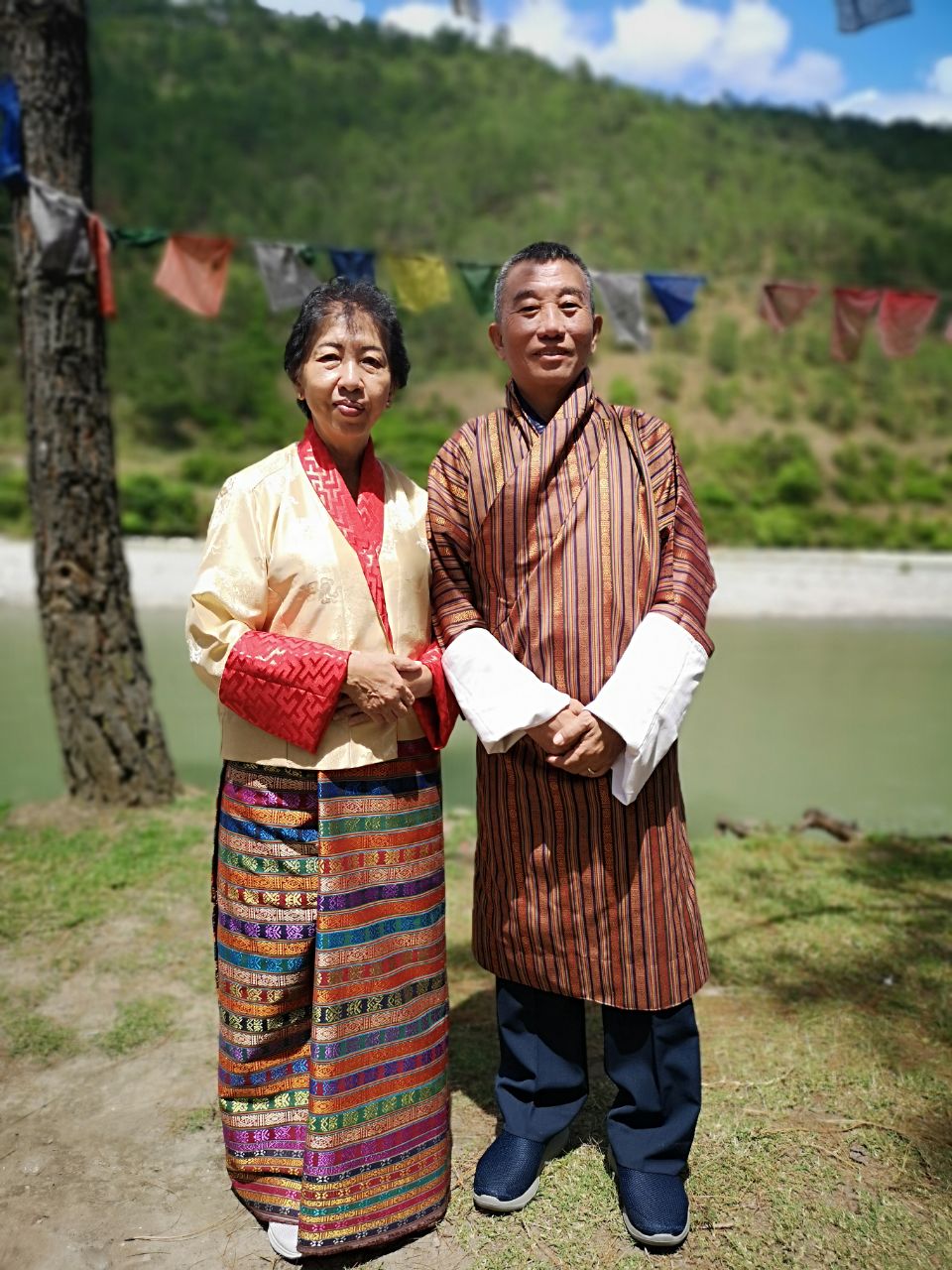BHUTAN
Travelog
What to Wear to a Bhutanese Festival: Dress Code and Cultural Etiquette

From what to avoid in your wardrobe to practical tips for picking the perfect outfit, you’ll be all set to respect local customs and enjoy the Bhutanese vibrant festivals.
What is the Dress Code for Bhutanese Festivals?
When you attend a Bhutanese festival, it is important to understand the dress code because it reflects the rich cultural heritage and traditions of Bhutan. The outfits you wear during these vibrant celebrations show respect for Bhutanese culture and highlight the intricate beauty of traditional garments like the gho for men and the kira for women.
Knowing what to wear can enhance your experience and help you immerse yourself in Bhutanese festival traditions.

Traditional Dress for Men
The traditional dress for men in Bhutan is the gho, which is an essential part of Bhutanese cultural attire. This long robe is both comfortable and elegant, usually made from cotton or silk with beautiful traditional patterns. Wearing the gho is not only a nod to cultural heritage but also to the national dress that symbolises Bhutanese identity.
This stunning garment has deep historical roots, dating back to the 17th century when it became a symbol of national identity and cultural pride. The gho is crafted from various fabrics and often features intricate motifs that reflect the rich heritage of the region.
When you wear a gho, ensure it is knee-length and paired with a traditional belt called a kera to enhance your silhouette. To complete the look, men often wear a kabney, a ceremonial scarf draped over the shoulder, the colour of which denotes social status—white for common citizens and orange for monks and high-ranking officials.

Traditional Dress for Women
For women, the traditional attire is called the kira, a key element of Bhutanese festival clothing. This long, colourful garment, made from various fabrics, is wrapped around the body and symbolises the beauty and modesty that hold cultural significance in Bhutanese culture. It is considered ceremonial attire and is an expression of the wearer’s ethnic identity.
When you wear the kira, you're not just putting on a dress; you're showcasing a rich heritage that reflects various styles influenced by local customs and your personal taste. The kira is often adorned with intricate patterns that tell a story about your origin or status.
Layering is crucial when wearing the kira, as it is paired with a long-sleeved blouse called a wonju underneath and a short, tailored jacket called a toego on top. With bold colours and diverse prints, each kira becomes a unique expression, creating a vibrant tapestry that carries deep cultural significance.
Accessories and Additions to Traditional Dress
Accessories are key to enhancing Bhutanese traditional dress and festive clothing. With vibrant scarves, unique jewellery, and beautifully crafted headwear all adding to the overall look, they embody cultural expression and the artistic skills of local artisans.
These accessories do more than just look good; they also reflect the rich cultural heritage of the region. For example, you will find intricate silver jewellery featuring nature-inspired motifs, showcasing the deep connection the people have with their surroundings.
Men wear a kabney, while women might add a rachu, a narrow embroidered scarf worn over the left shoulder, often reserved for formal occasions.
What Are the Cultural Etiquette for Attending Bhutanese Festivals?
Understanding cultural etiquette is crucial when you attend Bhutanese festivals; it ensures you have a respectful and immersive experience in this unique cultural setting. By adhering to attire recommendations and dressing appropriately, you show cultural understanding and respect for local traditions.
As you immerse yourself in the festivities, being mindful of religious customs and local traditions can significantly enhance your appreciation of Bhutanese culture. Keeping your behaviour in check—such as knowing the ins and outs of public manners and invitation etiquette—will help you navigate social gatherings in a way that honours local customs and makes your experience even more enjoyable.
Respect for Religious and Cultural Customs
You really want to respect religious and cultural customs during Bhutanese festivals. These events aren’t just parties; they’re a vibrant mix of history, belief, and community spirit that the Bhutanese people hold dear.
Every symbol you see—from the colourful prayer flags to the intricate masks worn in traditional dances—carries deep spiritual meaning and reflects values that have been cherished for generations. Ignoring or misinterpreting these customs risks disrespecting their rich cultural heritage and potentially offending those who treasure these traditions.

Proper Behaviour and Interactions with Locals
Exhibiting proper behaviour and knowing how to interact with locals at Bhutanese festivals is crucial for building positive relationships and appreciating the culture.
Understanding specific social norms can really enhance your experience. For example, when you greet someone, a simple nod or a "Kuzu zangpo la" (Hello) can go a long way in establishing a good rapport.
When engaging in conversations, be attentive; locals appreciate active listening and thoughtful responses over mere small talk. Showing respect for their customs—such as following dress codes and participating in rituals—demonstrates that you genuinely care.
Don’t forget to express gratitude when locals share their culture with you; a warm smile or a simple "Kadinche la" (thank you) reinforces that mutual respect. These behaviours not only make your interactions richer but also help you gain a deeper understanding of Bhutanese heritage.
Photography and Respect for Privacy
When you’re diving into photography at Bhutanese festivals, being mindful of privacy and consent is key to respecting the local culture.
It’s not just about snapping those vibrant moments; it’s about building trust and genuine connections with the people you wish to photograph. Before you capture someone’s image, simply asking for permission can truly demonstrate that you value their dignity.
Additionally, photography is sometimes restricted during sacred ceremonies and rituals. Always check with your tour guide or seek guidance from locals to ensure you're not intruding on sacred moments.
What to Avoid Wearing to a Bhutanese Festival?
When you attend a Bhutanese festival, it’s important to know what not to wear to show proper cultural respect and follow the dress etiquette.
Western Clothing and Inappropriate Attire
While formal Western attire is generally acceptable, wearing casual Western clothing like shorts, tank tops, or ripped jeans at a Bhutanese festival is inappropriate. These choices tend to clash with the cultural customs that emphasise modesty and traditional attire.
Revealing or Immodest Clothing
When you’re attending Bhutanese festivals, it’s a good idea to avoid revealing or immodest clothing. This is all about respecting the customs of modesty that are important in Bhutanese culture.
It’s not just a personal choice; it shows your respect for traditions and values that favour humility over flashy styles. Sleeveless tops, short skirts, and tightly fitted outfits might not be acceptable in many traditional settings, and wearing them could come across as disrespectful.
By opting for more conservative clothing—like long skirts, loose shirts, or outfits that cover your shoulders. and knees—you'll honour local customs and contribute to a respectful, inclusive atmosphere.
Tips for Choosing the Right Outfit for a Bhutanese Festival
When you’re choosing the perfect outfit for a Bhutanese festival, there are a few things you should bear in mind. Consider cultural norms, the weather, clothing styles, and your own comfort.
This way, you can ensure that you have a respectful and enjoyable experience whilst celebrating the festival and taking part in community gatherings.
Consider the Weather and Climate
You really need to think about the weather and climate when selecting your outfit for a Bhutanese festival because temperatures can change quite a bit depending on the season and region.
During the day, you might bask in warm sunshine, but as evening approaches, it can get chilly, especially at higher altitudes. Therefore, it’s a good idea to choose breathable fabric types like cotton or linen for your daytime wear.
When those cooler breezes arrive after sunset, layering is your best friend. Donning a traditional woollen shawl or a light jacket not only keeps you warm but also adds a touch of elegance to your overall look.
Choose Comfortable and Appropriate Shoes
Selecting comfortable and appropriate footwear is key when you are navigating the various terrains and activities at Bhutanese festivals. You want to be fully engaged in those lively community celebrations and rituals.
Traditional leather shoes or well-cushioned sandals with good support are great choices. Since you’ll likely need to remove your shoes when entering religious areas, consider footwear that is easy to take off and put on.
Be Mindful of Your Personal Style and Preferences
While adhering to dress codes and attire guidelines is important, don’t forget to keep your personal style in mind. You can express yourself while still honouring the local customs and dress etiquette.
Choosing colours and patterns that resonate with you, while also reflecting traditional Bhutanese designs, can create a unique look. Mixing modern accessories with traditional attire allows you to celebrate tradition with a personal twist.

Frequently Asked Questions
1. What is the dress code for a Bhutanese festival?
The national dress for both men and women is the gho, a knee-length robe tied at the waist with a cloth belt. Women wear a kira, a wrap-around dress, paired with a long-sleeved blouse called a wonju and a short jacket called a toego. Formal Western attire is also acceptable, but wearing traditional dress offers a more authentic experience that reflects Bhutanese identity.
2. Do I need to wear a specific colour or pattern for a Bhutanese festival?
There is no specific colour or pattern requirement for Bhutanese festivals. However, vibrant colours, traditional patterns, and intricate details are commonly seen in traditional attire, so incorporating these elements can enhance your outfit and pay homage to local artisans.
3. Are there any clothing items that are not allowed to be worn at a Bhutanese festival?
Avoid wearing revealing or tight-fitting clothing, as it is not appropriate for the conservative culture of Bhutan. Additionally, shorts and tank tops are not considered appropriate for festival attire.
4. Can I wear my own traditional clothing from my culture to a Bhutanese festival?
While it is not necessary, it is always appreciated when visitors show interest and respect for Bhutanese culture by dressing in traditional attire. If you choose to wear your own traditional clothing, make sure it is modest, respectful, and aligns with the cultural etiquette of the festival.
5. Do I need to cover my head or hair at a Bhutanese festival?
There is no specific requirement to cover your head or hair at a Bhutanese festival. In fact, removing hats when entering monasteries or temples is considered respectful.
6. Is there any other cultural etiquette I should be aware of at a Bhutanese festival?
When attending a Bhutanese festival, it is important to show respect by not wearing shoes inside temples or monasteries, refraining from pointing with your fingers, and avoiding public displays of affection. It is also considered polite to bring a small offering for the monks or temple, reflecting cultural respect and understanding of local customs.
Follow Druk Asia on social media for inspiring travel stories, breathtaking photos, and the latest updates from Bhutan.
Ready to Experience the Magic of Bhutan?
Fill in the form below and the friendly Bhutan Travel Specialist team will get back to you with expert advice, itinerary ideas, and everything you need to know. No obligations, just warm guidance from those who know Bhutan best.
Thank you for your message!
Hang tight—one of our friendly Bhutan Travel Specialists from Druk Asia will be reaching out soon with expert tips, insider advice, and exciting itinerary ideas to help you plan the adventure of a lifetime!
Discover
Breathtaking
Bhutan.
Thank you for subscribing!
You have successfully subscribed to our newsletter.




